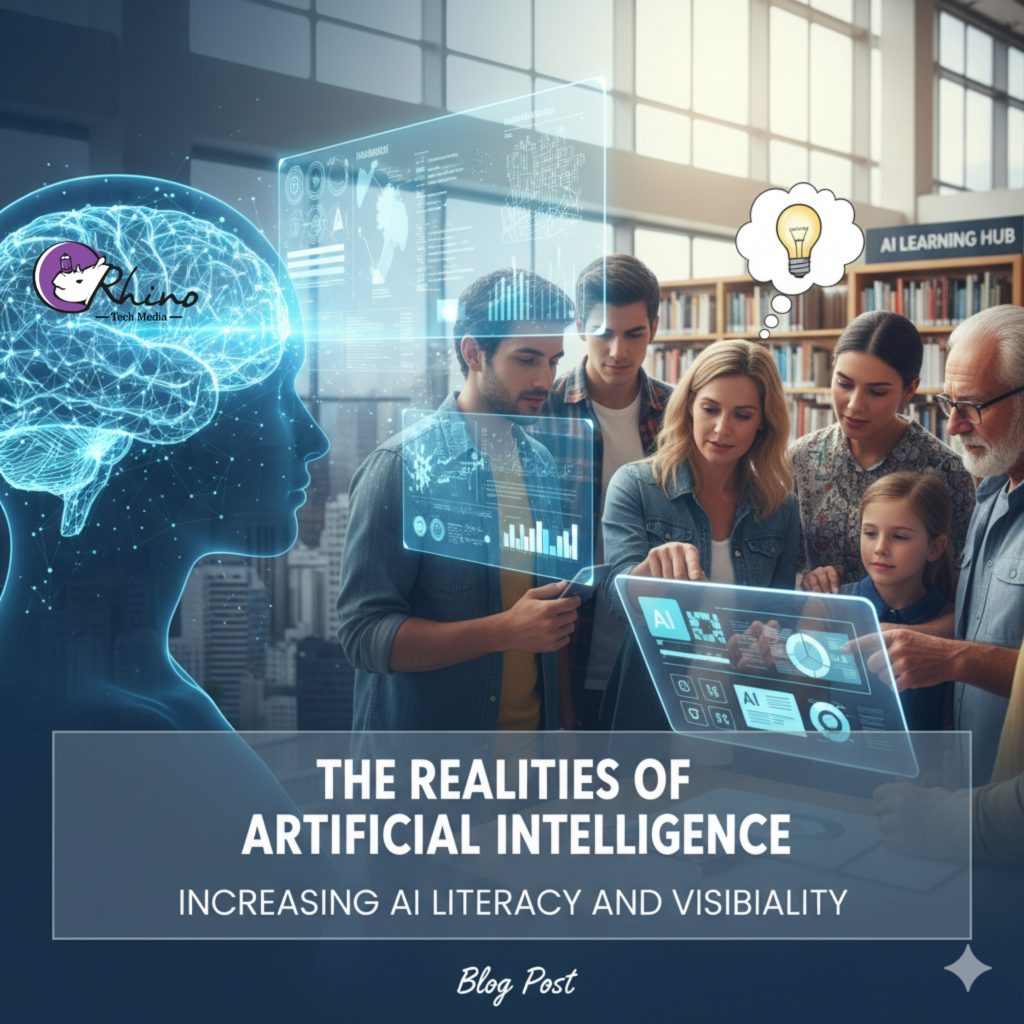Introduction
Artificial Intelligence (AI) has rapidly transitioned from a speculative concept into a transformative force shaping economies, industries, and societies. From healthcare diagnostics and financial modeling to customer service and creative industries, AI is no longer confined to research laboratories but is embedded in daily life. Despite this widespread integration, misconceptions about AI persist, and public understanding often lags behind technological advancement. This gap highlights the urgent need to promote AI literacy and visibility to ensure individuals and communities can navigate, contribute to, and benefit from an increasingly AI-driven world.
The Realities of Artificial Intelligence
One reality of AI is its dual nature: it is both immensely powerful and inherently limited. AI systems excel at specific, narrowly defined tasks—such as recognizing patterns in vast datasets, generating text, or predicting consumer behavior. However, they lack the general reasoning, emotional intelligence, and contextual awareness of humans. Unlike the popular depictions in films that portray AI as omnipotent machines, today’s AI operates under strict boundaries defined by its training data and algorithms.
Another reality is AI’s dependence on human input and oversight. The quality and fairness of AI outcomes are directly tied to the data it is trained on. If datasets contain biases, stereotypes, or inaccuracies, AI systems can replicate and amplify these flaws, sometimes in ways that reinforce social inequalities. Similarly, decisions about how AI is designed, deployed, and regulated are human choices—meaning that the ethical responsibility lies not with the machine but with its creators and users.
A further dimension is AI’s transformative societal impact. It is reshaping labor markets by automating routine tasks while creating new opportunities in areas such as data science, ethics, and digital governance. In healthcare, AI promises earlier diagnoses and personalized treatments; in education, it enables adaptive learning. Yet, these benefits are unequally distributed, raising questions about access, equity, and digital divides.
The Need for AI Literacy
AI literacy is the capacity to critically understand, evaluate, and use AI technologies. Just as digital literacy became essential in the internet age, AI literacy is now vital in an era where algorithms influence what news we read, what products we buy, and even how governments make policy decisions.
Increasing AI literacy helps demystify the technology. When the public understands that AI is not “thinking” in a human sense but identifying correlations and patterns, fear-based narratives can be replaced with informed discussions. Literacy also empowers individuals to recognize the risks of AI, such as privacy violations, misinformation, or algorithmic discrimination, while equipping them with tools to demand accountability from organizations deploying AI.
For workers, AI literacy is a matter of survival in evolving job markets. Employees equipped with foundational knowledge of AI can adapt more readily, collaborating with intelligent systems rather than competing against them. For students, learning about AI early fosters innovation, creativity, and ethical reflection, preparing the next generation to shape technology responsibly.
The Importance of AI Visibility
Visibility refers to making AI processes and impacts transparent to the public. Many AI systems currently operate behind the scenes—embedded in platforms, applications, and decision-making systems without users realizing it. This lack of visibility fuels mistrust and prevents meaningful public engagement.
Promoting AI visibility requires companies and governments to disclose how algorithms are used, what data informs them, and how decisions are made. Clear explanations, rather than technical jargon, can make AI systems more accessible. Increased visibility also ensures accountability, helping citizens question and challenge decisions that affect their lives, from loan approvals to criminal sentencing.
Conclusion
The realities of AI show that it is neither an all-powerful intelligence nor an insignificant tool. It is a human-created system with vast potential and considerable risks. To harness its benefits while mitigating its challenges, society must prioritize AI literacy and visibility. Education systems, policymakers, and private organizations all have a role in ensuring that individuals understand how AI works, how it impacts them, and how they can actively shape its development. By bridging the gap between innovation and public understanding, we can build a future where AI serves humanity equitably, ethically, and transparently.

